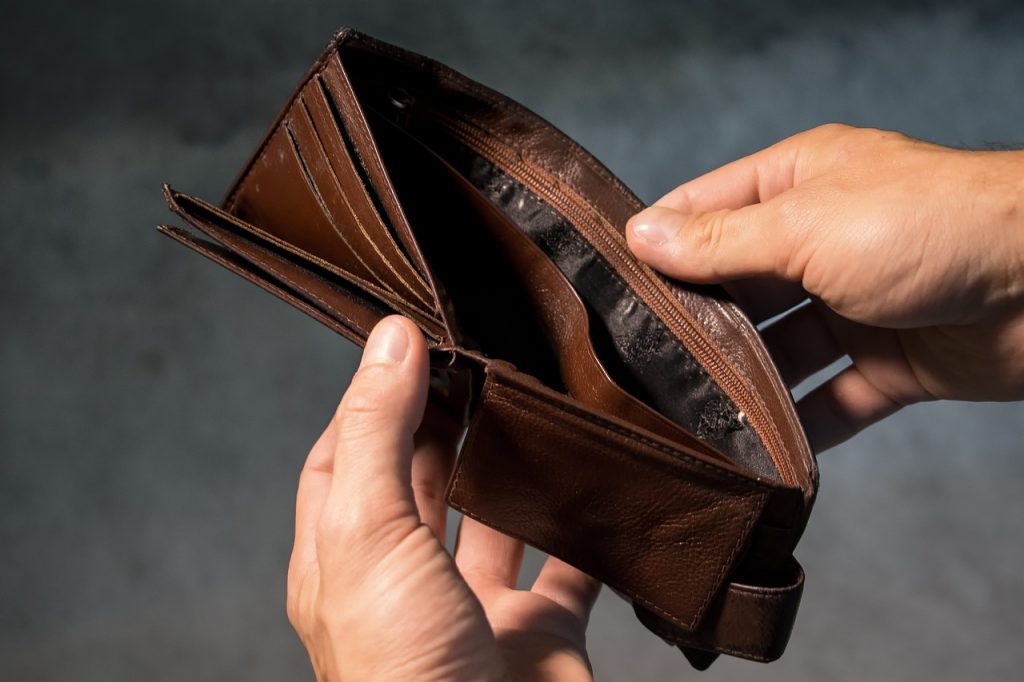What next?
CNBC:
Stocks ended lower Tuesday after the Centers for Disease Control told Reuters that a traveler from China was diagnosed with the first U.S. case of coronavirus, in Seattle.
The Dow closed down 152 points after falling as much as 200 points. The S&P 500 shed nearly 0.3%, while the Nasdaq dipped 0.2%.
Shares of casino and hotel companies Wynn Resorts and Las Vegas Sands fell more than 6% and 5%, respectively, amid fears that the coronavirus outbreak in China would dent international travel.
A virus! Could a microscopic bug be the ‘pin’ this bubble has been looking for? Who knows.
But something will pop it sooner or later…
The day the world ended
We’ve been calling September 17, 2019 ‘the day the world ended.’ On that day, a spike in short-term lending rates — in the ‘repo’ market — threatened the U.S. government’s deficit spending…and blew the doors off the Federal Reserve’s ‘normalization’ policies.
The Fed has been adding some $100 billion per month to the nation’s money supply since then. (Paid-up readers of The Bonner-Denning Letter can look for more on that in our January issue, out this evening.)
Of course, we are exaggerating the finality of the situation for dramatic effect.
The world goes on. But it’s not the same world. And the new world will probably be a lot less agreeable than the old one. And the disagreeableness of it will increase greatly when the bubble blows up.
Then, prices won’t be rising; they’ll be falling — hard. Prices of financial assets, in particular.
That is when the printing presses will really get rolling. The Fed will have to inflate even more aggressively to stop the market from falling.
But today we’re not looking at the future. We’re recalling the past. As we’ll see, there’s more than one way to go broke…
Remember the ’70s?
‘This reminds me of the early ’70s,’ said an old-timer yesterday.
Do you remember what happened, Dear Reader? We do. We were out of college, out of the Navy…and just entering the workforce.
If we recall correctly, we earned barely $120 a week as a roofer’s helper. It wasn’t much money. But it was only temporary, until we found a real job.
And life back then wasn’t so expensive. With $120 you could buy three whole ounces of gold. Or, you could invest in stocks; with seven weeks’ worth of wages, assuming we spent nothing, we could buy all 30 of the Dow stocks.
Gold was the better bet. Over the next 10 years, the Dow went nowhere. In 1981, it was about where we found it in 1971. But wait…
The old money was gone. In its place was new money, a new dollar from which the gold link had been removed. Now it was called a ‘Federal Reserve note,’ meaning that it was a liability — a debt — owed to you by the central bank.
Arab oil
Most people barely noticed the difference. The new dollars looked almost exactly like the old ones. They spent like the old ones, too. What difference did it make if the foreigners could no longer redeem them for gold as promised?
Well, it made a difference to the Arabs. Oil producers noticed that getting new dollars for their oil was not the same as getting old dollars. The price of gold rose from $35 in 1970 to over $100 in 1973. Arab exporters were still taking $3 for a barrel of oil. In real terms, their incomes had been cut by two-thirds.
In October of 1973, OPEC announced an embargo on exports. The ostensible reason was to target nations supporting Israel in the Yom Kippur War. The hidden motive was to get the price of oil back to where it had been when the dollar was still real money.
Naturally, the feds reacted unwisely. They imposed price controls; rather than ration gasoline with higher prices, they rationed it by wasting everyone’s time.
We had begun a new job by then, in Washington, about a 30-mile drive from home. Gas lines had formed. In order to get the gas we needed, we got up at 4 a.m. to get in position, sleeping in our truck until the station opened…
The great inflation
The first oil shock set off the Great Inflation. The Consumer Price Index was at about 4% in early ’73. By 1975, it rose to a peak of 10%, eased off, and then rose again to end the decade at 14%.
People blamed the Arabs. But the real price of oil — in gold — merely went back to 1970 levels, before the new money was put in place. And the real villains weren’t in Riyadh. They were in Washington.
As for investors, they thought they went nowhere in the ’70s. But that was just another illusion caused by the new dollars. In real money, they lost 92% of their stock market wealth. Prices held steady in nominal, new dollars. But in old-dollar terms, they collapsed.
So what do you think? What would you tell the young man just starting out today? Buy stocks? Or buy gold?
Or let’s put the question another way. Are the feds likely to inflate more or less than in the 1970s?
To be followed up…
Regards,
Bill Bonner
